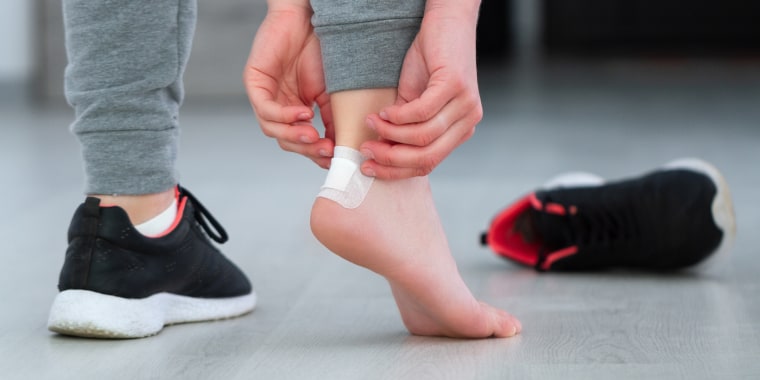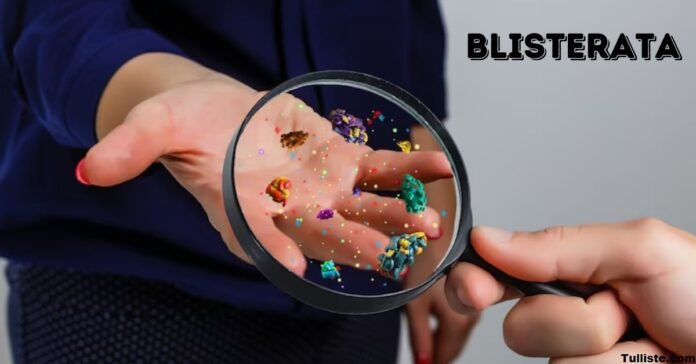In a world where our feet carry us through countless adventures, the last thing we want is to be held back by discomfort. Imagine this: you’re out exploring, enjoying life to the fullest when suddenly, a pesky blister rears its unwelcome head. Enter Blisterata – a common but often misunderstood condition that can put a damper on your day if not properly addressed. Let’s dive into everything you need to know about Blisterata and how to tackle it head-on!
What is Blisterata?
Picture this: Blisterata, a fancy name for those irritating fluid-filled bubbles that form on your skin in response to friction or injury. These blisters can pop up anywhere – from your heels after a long hike to the back of your ankles from ill-fitting shoes.
But why do these blister buddies decide to grace us with their presence? Well, it’s all about protection. When there’s excessive rubbing or pressure on the skin, our body springs into action by creating a cushion of fluid beneath the affected area.
While most blisters heal on their own without much fuss, severe cases may require medical attention. So next time you spot one of these little nuisances, remember – it’s just your body’s way of saying “I’ve got you covered.”
Understanding the Symptoms of Blisterata
Blisterata, a skin condition that can cause discomfort and inconvenience, presents with several distinctive symptoms. One of the primary signs is the formation of fluid-filled blisters on the surface of the skin. These blisters can vary in size and may be painful or itchy.
Individuals affected by Blisterata may also experience redness and swelling around the blistered area. The skin surrounding the blisters might feel warm to the touch, indicating inflammation. In some cases, there could be a burning sensation accompanying these symptoms.
As Blisterata progresses, patients may notice an increase in sensitivity at the affected site. Touching or rubbing against the blisters can cause significant discomfort and exacerbate symptoms. It’s essential to recognize these signs early on to seek appropriate treatment and management strategies for Blisterata.
Causes and Risk Factors
Blisterata can be caused by various factors, with the primary one being friction or pressure on the skin. This repeated rubbing can lead to the top layer of skin separating from the lower layers, forming a blister. Additionally, burns, sunburns, and certain medical conditions like eczema or herpes can also trigger blister formation.
Some individuals are more at risk of developing Blisterata than others. People who engage in activities that involve repetitive movements such as running or playing musical instruments may be prone to blisters due to constant friction on the skin. Moreover, those with sensitive skin or weakened immune systems are also more susceptible to developing blisters.
Understanding these causes and risk factors is crucial in managing and preventing Blisterata effectively. By taking necessary precautions and addressing any underlying health issues, individuals can reduce their chances of experiencing painful blisters.
Treatment Options for Blisterata
When it comes to treating Blisterata, the approach typically involves addressing both the symptoms and underlying causes of the condition. Depending on the severity and location of blisters, various treatment options may be recommended by healthcare professionals.
One common method is keeping the affected area clean and dry to prevent infection. Topical ointments or creams can also help soothe discomfort and promote healing. In some cases, oral medications may be prescribed to reduce inflammation or manage pain associated with blister formation.

For more severe cases of Blisterata, medical procedures such as draining fluid from blisters or surgical intervention might be necessary. It’s essential to follow your doctor’s recommendations closely to ensure proper healing and minimize the risk of complications.
Additionally, incorporating lifestyle changes like wearing appropriate footwear or avoiding triggers that exacerbate blister formation can aid in managing symptoms effectively. Consult a healthcare provider for personalized treatment advice tailored to your specific needs.
Prevention Tips to Avoid Blisterata
Prevention Tips to Avoid Blisterata revolve around taking proactive steps to minimize the risk of developing blisters on your skin. One key tip is to ensure proper footwear that fits well and provides adequate support, reducing friction on your feet. Keep your skin clean and dry, especially in areas prone to sweating or rubbing.
Wearing moisture-wicking socks can also help prevent excessive moisture buildup that can lead to blisters. Consider using cushioning or padding in areas susceptible to blister formation, such as the heels or toes. If engaging in activities that increase friction, like hiking or running, use lubricants or bandages as a protective barrier.
Regularly inspect your feet for any signs of irritation or redness and address them promptly. Consider gradually breaking in new shoes rather than wearing them for extended periods right away. By implementing these prevention tips consistently, you can reduce the likelihood of experiencing discomfort from Blisterata outbreaks.
Coping with Blisterata: Lifestyle Changes and Support Groups
Living with Blisterata can be challenging, but there are ways to cope effectively. Making lifestyle changes is crucial in managing the condition. Ensuring proper foot hygiene and wearing comfortable footwear can help prevent blisters from forming or worsening.
In addition to lifestyle adjustments, seeking support from others facing similar challenges can make a significant difference. Joining support groups or online communities dedicated to individuals with Blisterata can provide emotional support, tips, and encouragement.
Engaging in activities that promote relaxation and stress reduction, such as meditation or yoga, can also help manage the psychological impact of dealing with chronic blisters. It’s essential to prioritize self-care and find healthy outlets for coping with the physical and emotional aspects of Blisterata.
Remember that you’re not alone in this journey – connecting with others who understand your struggles can offer valuable insights and a sense of community during difficult times.
Conclusion
Being informed about Blisterata is the first step towards managing this condition effectively. By recognizing the symptoms, understanding the causes and risk factors, exploring treatment options, implementing prevention tips, and making necessary lifestyle changes or seeking support from groups or professionals if needed, individuals can take control of their health and well-being.
Remember that early detection and proactive measures are key in managing Blisterata. Stay vigilant about any changes in your skin or overall health, seek medical advice promptly when needed, and don’t hesitate to reach out for help or support. With proper care and attention, it is possible to live a fulfilling life even with Blisterata. Stay positive, stay informed, and prioritize your health above all else.


